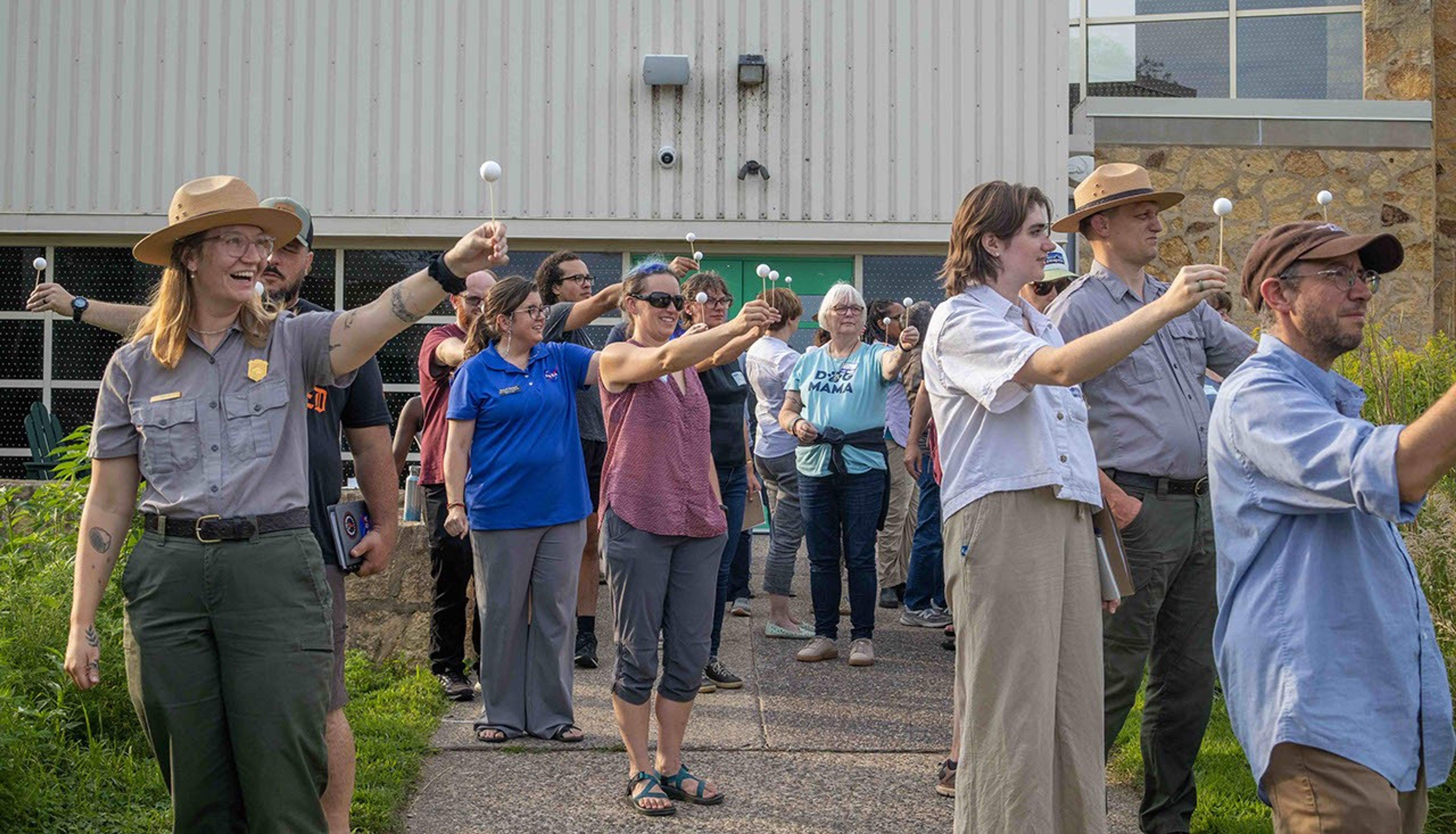The most recent spacecraft telemetry was acquired on Mar. 17 from the Deep Space Network tracking complex at Goldstone, California. The Cassini spacecraft is in an excellent state of health. Information on the present position and speed of the Cassini spacecraft may be found on the "Present Position" page at: http://saturn.jpl.nasa.gov/operations/present-position.cfm.
Wednesday, March 11 (DOY 070)
As part of the RCS thruster swap activities, the background sequence was deactivated today. The last science observations to be performed before the instruments were either put to sleep or switched off were an Imaging Science
13.5 hour movie of the F-Ring with the Composite Infrared Spectrometer and Visual and Infrared Mapping Spectrometer riding along.
Thursday, March 12 (DOY 071):
On Mar. 12, the B branch RCS thrusters on board Cassini were made prime. From Mar. 13 through Mar. 15, on board activities centered on exercising and verifying the newly activated hardware. Reaction wheel momentum biases were performed, and the spacecraft was commanded to hold fixed pointing attitudes within various deadbands for about an hour each. After the deadbanding tests, the spacecraft performed fast and slow turns about each of the X, Y, and Z-axes. Cleanup commands were issued, and preparation for the
reactivation of the S48 background sequence occurred Mar. 15. All activities completed normally. For more on the thruster swap link to: https://solarsystem.nasa.gov/news/11163/.
Monday, March 16 (DOY 075):
A meeting was held today to discuss the thruster swap outcome. With Spacecraft Office and Project Management’s concurrence, the swap to the backup thrusters was deemed complete and successful. A go-ahead was given to uplink and re-activate the S48 background sequence and awaken the science instruments. The necessary files were radiated to the spacecraft after the
meeting.
Tuesday, March 17 (DOY 076):
An update on dust hazard periods during the extended or Equinox mission and beyond was presented today at the Mission Planning Forum.
Orbit Trim Maneuver (OTM) #183x was performed today. This is a cleanup maneuver from OTM-183 on Mar. 9. The Reaction Control Subsystem burn began at 6:14PM PDT. Telemetry immediately after the maneuver showed the burn duration was 12.75 seconds, giving a delta-V of 21.64 mm/s. This was an extra unplanned maneuver inserted into the timeline one week prior to OTM184, the last maneuver prior to the T51 Titan flyby. Since OTM184 would otherwise have been the first RCS maneuver to be performed after the
thruster swap, this extra maneuver was added to provide time margin in the event of any surprises associated with the first maneuver on the new thrusters. In fact the maneuver was performed flawlessly and OTM184 will very likely not be required.
A command approval meeting was held today for the nine instrument expanded block files to be uplinked in support of S49. Uplink will begin on Mar. 19, the background sequence will go up on Mar. 22, and sequence execution will begin on Thursday, Mar. 26.
Commands to re-activate the S48 background sequence executed last night. While observing telemetry, and just before the pass ended, the sequence leads were able to observe the completion of the first two commands issued from the background sequence.
Saturn Related:
The March 2009 What's Up podcast is all about Saturn. It spans from Galileo's first views of Saturn 400 years ago to Cassini at Saturn right now! http://www.jpl.nasa.gov/video/index.cfm?id=821.
The Hubble Telescope released gorgeous images of Saturn taken just a few weeks ago while four of Saturn's moons crossed in front of the planet. Here is the Hubble news release: http://www.jpl.nasa.gov/news/news.cfm?release=2009-051.
Finally, if you haven't seen Saturn yet, here is the Viewing Saturn in 2009 viewing guide: http://saturn.jpl.nasa.gov/Education/saturnobservation/viewing2009/.

































